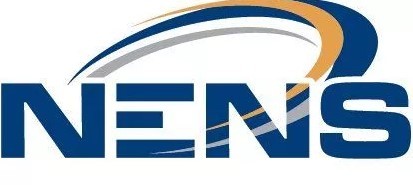Lowell IT Services Provider Explains the Three Primary Considerations of Cloud Migration
Lowell, United States - December 4, 2023 / New England Network Solutions - Lowell Managed IT Services /
Insights from Lowell IT Services on Key Factors in Cloud Migration
The shift to cloud computing has been nothing short of a revolution. With the shift from on-premise to cloud migration, businesses of all sizes realize dramatic improvements in employee productivity and agility.
With cloud infrastructure and SaaS applications, organizations can efficiently scale, rapidly grow, and better serve customers on a global basis.
We are already far along in this revolution. Most organizations have already shifted many core business applications to the cloud, including things like email and calendaring applications, along with corporate phone systems.
SaaS applications have exploded in popularity as well since they are easy to purchase and provision with just a few clicks of the mouse and a departmental credit card. Research from Gartner shows that SaaS solutions generated approximately $105 billion worth of revenue in 2020 alone.
Nevertheless, the rapid growth in SaaS and cloud applications has not been without its challenges. Organizations today struggle with “shadow IT” and the unregulated adoption of software tools.
Too often, users are anxious to quickly leverage new tools, while forgetting about important considerations such as training, security, backup, data governance, and compliance.
The shift from on-premise to cloud migrations to support cloud applications shows no signs of slowing down. Business leaders should be mindful of the risks, rewards, and realities of cloud adoption.
Here are three key considerations for businesses looking to better plan and manage their shift to the cloud.
3 Considerations for On-Premise to Cloud Migrations
1. Plan Ahead
Planning Consideration #1
Properly deploying cloud and SaaS applications requires planning and organization. Unfortunately, people too often underestimate the value of planning and a methodical approach to technology deployment.
As part of a comprehensive on-premise to cloud migration strategy, planning is critical for several reasons.
First, a comprehensive on-premise to cloud migration plan executed in collaboration with IT staff or your IT service provider will help avoid many of the pitfalls of cloud migration. A hasty and poorly planned migration tends to open up new security threats and vulnerabilities.
While SaaS and cloud applications are easy to use, they also make it that much easier for hackers and cybercriminals to compromise corporate accounts. Hackers primarily attack cloud applications, by performing phishing and spear phishing attacks at employees, to compromise credentials.
Cloud applications often house highly sensitive intellectual property, along with client, employee, and vendor information. Years ago, this sort of data was housed safely in the corporate data center, behind layers of firewalls and security defenses.
Now, accessing this sort of information is easier both for employees and the bad guys alike. Suffice it to say, that a sound plan will help your organization avoid many security risks, which ultimately helps your business deal with on-premise to cloud migration challenges.
Planning Consideration #2
Integrating your cloud migration with your overall corporate IT plan will help you maximize the full value of your cloud applications. Some of the most powerful benefits of cloud and SaaS applications are realized by integrating various applications.
For example, salespeople are far more productive when their CRM application is fully integrated with their email client and calendar. Support personnel are better able to support customers when inbound calls and the cloud-based phone system talk seamlessly with the CRM systems and other back-office applications. Embracing SaaS and cloud applications may seem straightforward, but the process of migrating data from on-premises to the cloud demands careful planning, expertise, and time. Achieving maximum value from your SaaS applications necessitates seamless integration with your entire technology ecosystem. Partner with one of the leading IT services providers in Lowell to ensure a seamless integration process.
Planning Consideration #3
Training is another area often overlooked. A proper on-premise to-cloud migration strategy and adoption process should take into consideration the needs of the users and the realities of the learning curve.
Whether an application is hosted on-site or in the cloud, users will always require training and guidance on how to properly use the application. There may be even important corporate policies that may impact how employees can use corporate data and applications. All of these items need to be baked into your overall plan.
2. Security, Identity, and Access Management
With the growth in SaaS and cloud applications, the password problem has only grown in complexity for on-premise to cloud migration strategies. The average user today has dozens or even hundreds of different websites, accounts, and software tools between their personal life and work.
Password reuse is a massive challenge. According to a survey conducted by Google, 65% of people admit to reusing passwords at work and in their personal lives. All it takes is for one website to get breached and that password can now be used in the wild.
If the victim has re-used passwords across their work systems and cloud applications, a single password compromise can lead to a big problem for an organization.
The answer to the password reuse problem is for employees to use diverse and complex passwords across every system, website, and tool. To do so, employees need a host of different security tools to navigate this complex situation.
First, employees should employ a password manager service like LastPass or Dashlane as part of their on-premise to-cloud migration tools. These services allow employees to use unique, randomly generated passwords across all of their sites and services, while only needing to remember one long, complex passphrase to protect their password locker.
Second, organizations should employ multi-factor authentication (MFA) to defend against password compromises. An MFA solution leverages something the user knows, such as their password, with something they have, such as a smartphone with an authenticator application that generates a one-time password.
With MFA, even if a cybercriminal compromises a user’s password, their attempt to authenticate and breach the user’s account will fail because they don’t have the user’s smartphone handy. At NENS, we standardize on MFA powered by Cisco Duo, an industry-leading and easy-to-use MFA solution.
Single sign-on solutions (SSO) are another way for organizations to tame the password beast. An enterprise SSO solution delivers many of the same benefits as a password manager, but it is organized and managed at the corporate level.
An enterprise SSO solution allows the user to log in once with their main corporate credentials and then be dynamically logged into all their other corporate applications throughout the workday. The solution will often present all of the users' corporate apps on a single, web-based dashboard.
Like with a password manager, security is improved because each discrete app or tool has its unique password, while the life of the employee is simplified since they only need to log in once to get access to all of their applications.
3. Data Sprawl, Governance, and Backups
The last main consideration with the growth in cloud and SaaS applications is governing your corporate data. Today, corporate data, intellectual property, and customer information likely live in more places than ever.
At the same time, users leverage a host of different devices to access corporate applications and data, including, mobile phones and tablets, along with traditional laptops and desktop computers.
File collaboration and syncing tools, such as OneDrive, SharePoint, Teams, and Dropbox, are crucial on-premise to cloud migration tools. They make it easy for users to access corporate data from any device, from anywhere.
While this is a huge productivity boon for users, it poses a host of new and different challenges for IT administrators and IT service providers. Data now is spread across more devices and more easily accessible to users by design. The risks of data loss, theft, and exfiltration are higher than ever.
On top of the on-premise to cloud migration challenges associated with file collaboration platforms, SaaS applications in general will now house more and more corporate and customer information. In some cases, customer and patient information may be protected from disclosure or loss by very strict laws and industry regulations.
In addition, while most cloud and SaaS providers will secure and protect their infrastructure and the application, the end user organization is ultimately legally responsible for backing up and protecting the data that lives in the application.
While it is counterintuitive, every piece of cloud infrastructure and SaaS application needs a sound backup and recovery strategy.
Lowell IT Services: Your Reliable Cloud Migration Partner
In summary, organizations of all sizes should carefully plan their future cloud migrations, while paying close attention to the vital issues around application integration, training, security, backup, and recovery.
If you are a new or existing client with questions about your on-premise to cloud migration strategy, please reach out to the leading Lowell IT services provider.

Contact Information:
New England Network Solutions - Lowell Managed IT Services
11 Kearney Square
Lowell, MA 01852
United States
Michael Kourkoulakos
(855) 918-2126
https://www.nens.com/
Original Source: https://www.nens.com/on-premise-to-cloud-migrations/


